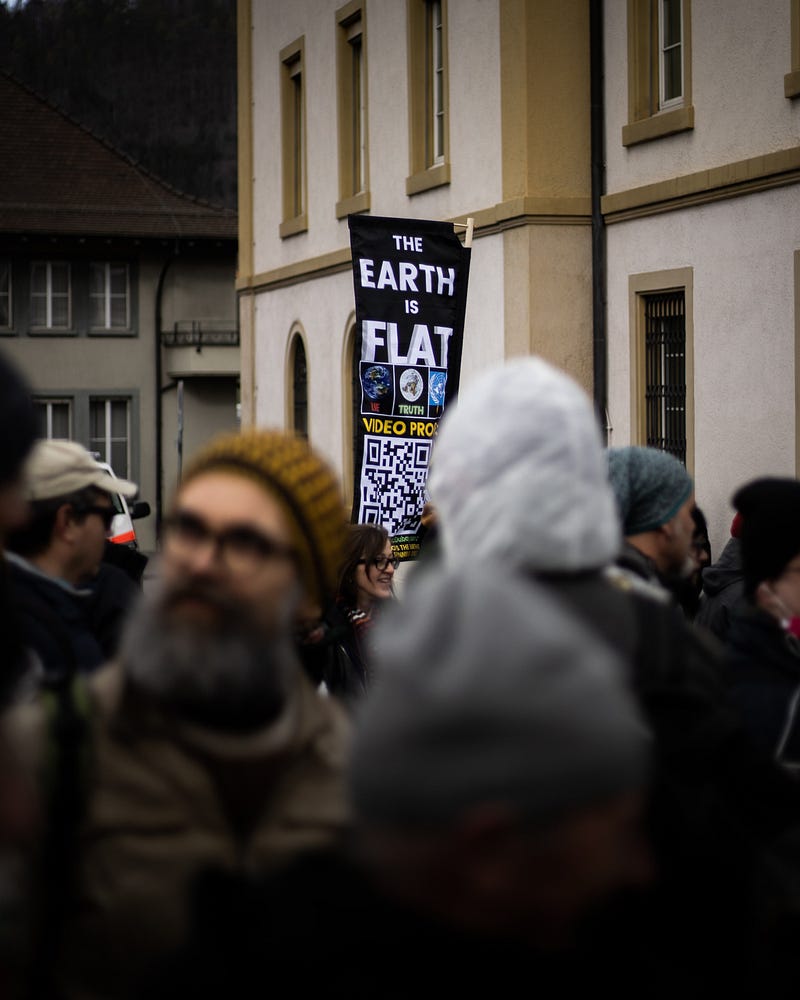Understanding the Flat Earth Belief: Insights and Perspectives
Written on
Chapter 1: The Flat Earth Phenomenon
For a long time, I dismissed the flat earth movement as merely a joke, akin to joining a quirky religious group like “The True Risen Elvis Church.” However, I’ve come to realize that a considerable number of individuals genuinely believe in a flat Earth. Surprisingly, they are not fools; rather, they are misinformed and searching for a sense of belonging.
In today's world, where tribal divisions are increasingly pronounced, it’s natural for individuals to seek community. The current climate is unsettling, and misinformation travels faster than ever, fueled by both technology and age-old conspiracy theories.
While social media contributes to our detachment from tangible reality, it’s important to remember that these conspiracies often stem from deeper social and political contexts. Personally, I've had the privilege of witnessing the curvature of the Earth from the shores of Kona, yet our perceptions can sometimes be misleading. It’s essential to acknowledge that we need both scientific understanding and collective agreement to navigate these beliefs.
A documentary titled Behind the Curve features prominent figures in the flat Earth movement, including Mark Sargent and Patricia Steere. They view themselves as defenders against government manipulation and misinformation.
Though it's easy to engage in debates about authority, vaccinations, and various conspiracy theories, Behind the Curve also highlights the internal conflicts within the flat Earth community—disagreements over theories, competing personalities, and the quest for recognition among peers.
Throughout the film, scientists provide insights, often appearing perplexed by the fervent beliefs held by these individuals. While it’s clear that conspiracy theories persist because of humanity's desire for validation and community, it’s crucial to approach Flat Earthers with empathy rather than scorn. Their friends and family generally strive to understand them, and I too would be open to sharing a drink despite my skepticism.
Science teaches us to begin with a hypothesis that we aim to disprove, rather than merely confirm our beliefs. However, we are all guilty of seeking affirmation of our values and opinions. While Flat Earthers may struggle with critical thinking, so do many others. They project their beliefs with a fervor that often overshadows the shared reality we all inhabit.
To foster understanding, we must recognize that those who subscribe to the flat Earth belief are not a punchline but rather individuals who are misinformed—ironically embodying the very issues they believe they are fighting against. They yearn for evidence to prove their perspective, yet they often distrust outsiders, whom they view as complicit in a narrative of misinformation.
It's crucial not to vilify these true believers, as doing so only perpetuates their convictions. Instead, we should see them as curious, passionate, and significantly misled, albeit in ways that diverge from the majority of society.
Please follow, clap, highlight, or comment to receive Rivers of Appreciation.
Section 1.1: Exploring Misconceptions

Section 1.2: The Role of Community in Belief Systems
Chapter 2: Insights from Documentaries
In examining these beliefs, it’s worth noting the insights shared through various documentaries.
The first video, Eric Dubay Sucks at Life (200 Flat Earth “Proofs” Debunked), critiques popular arguments presented by flat Earth proponents and offers a thorough debunking of their claims.
The second video, Flat Earth "Science" -- Wrong, but not Stupid, delves into the reasoning behind flat Earth beliefs and the psychology of those who hold them. It presents a balanced view of the underlying motivations driving this community.